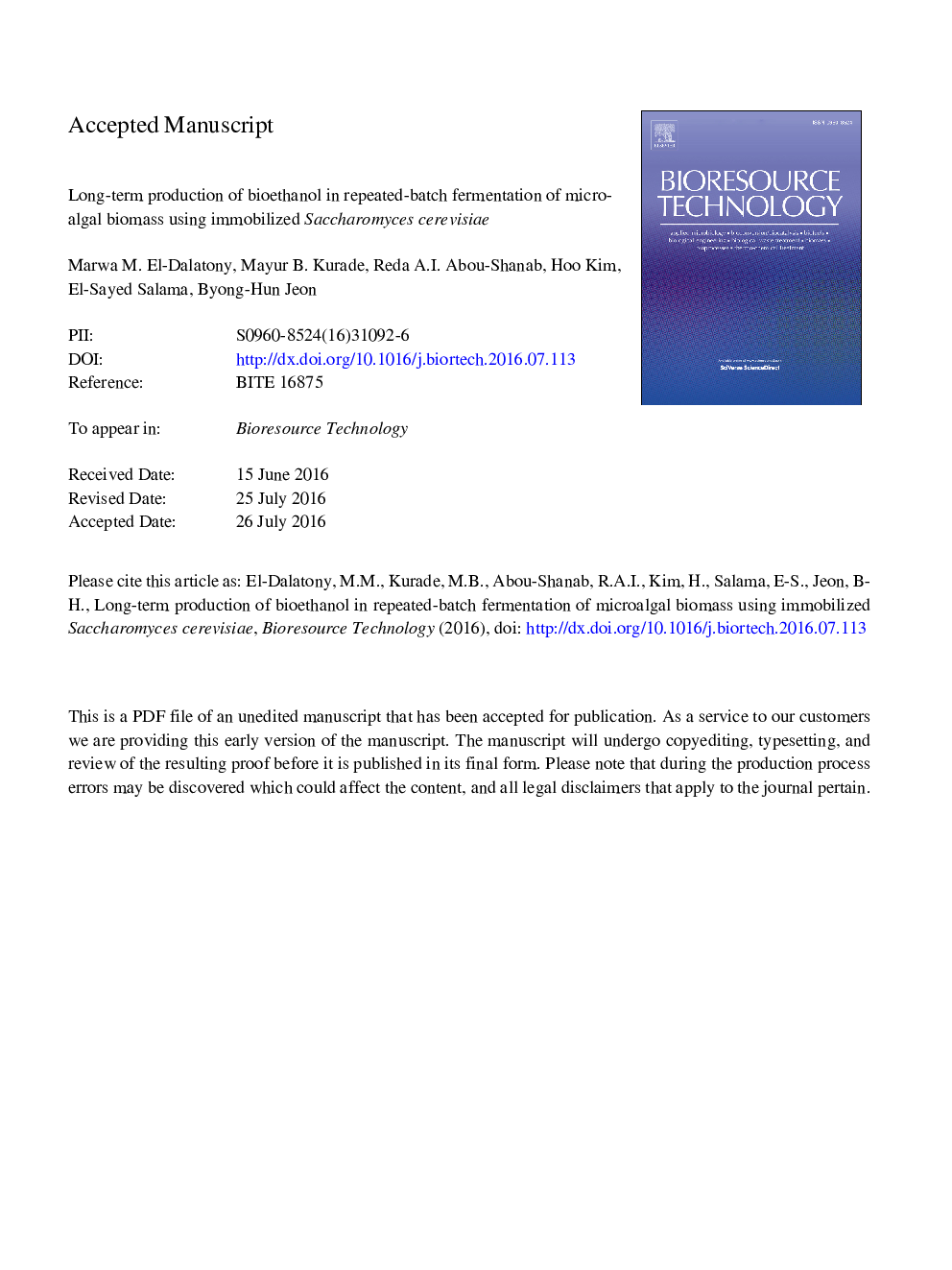| Article ID | Journal | Published Year | Pages | File Type |
|---|---|---|---|---|
| 7069799 | Bioresource Technology | 2016 | 34 Pages |
Abstract
Separate hydrolysis fermentation (SHF) and simultaneous saccharification fermentation (SSF) processes were studied for bioethanol production from microalgal biomass. SSF was selected as an efficient process to enhance the bioethanol yield through repeated-batches using immobilized yeast cells. Combined sonication and enzymatic hydrolysis of Chlamydomonas mexicana generated 10.5 and 8.48Â g/L of ethanol in SSF and SHF, respectively. Yeast utilized maximum portion of total reducing sugar (TRS) reaching a consumption efficiency of 91-98%. A bioethanol yield of 0.5Â g/g (88.2% of theoretical yield) and volumetric productivity of 0.22Â g/L/h was obtained after 48Â h of SSF. Immobilized yeast cells enabled repetitive production of ethanol for 7 cycles displaying a fermentation efficiency up to 79% for five consecutive cycles. The maximum ethanol production was 9.7Â g/L in 2nd-4th cycles. A total energy recovery of 85.81% was achieved from microalgal biomass in the form of bioethanol. Repeated-batch SSF demonstrated the possibility of cost-effective bioethanol production.
Keywords
Related Topics
Physical Sciences and Engineering
Chemical Engineering
Process Chemistry and Technology
Authors
Marwa M. El-Dalatony, Mayur B. Kurade, Reda A.I. Abou-Shanab, Hoo Kim, El-Sayed Salama, Byong-Hun Jeon,
